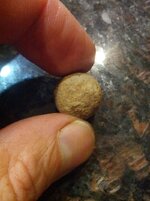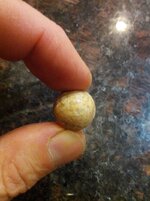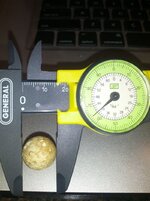CityDigger
Full Member
- Dec 30, 2012
- 142
- 78
- Detector(s) used
- Teknetics T2
Garrett AT Pro
XP Deus
- Primary Interest:
- Relic Hunting
Not sure if it is proper protocol to measure in mm or inches, but it's easier to just use mm's than convert my micrometer to inches. I realize that it is probably some type of projectile. Just trying to narrow it down. Found near Williamsburg. What do you think? Feels like lead.
Amazon Forum Fav 👍
Upvote
0








